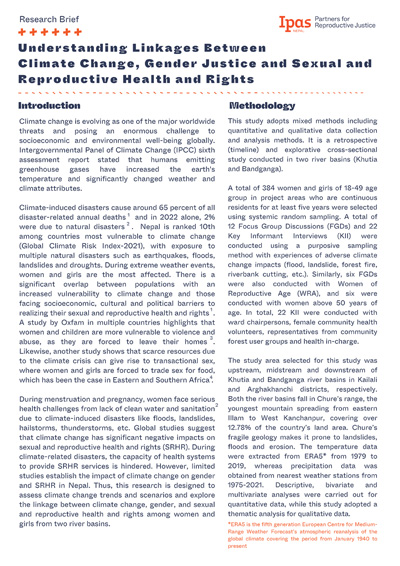 INTRODUCTION
INTRODUCTION
Climate change is evolving as one of the major worldwide threats and posing an enormous challenge to socioeconomic and environmental well-being globally. Intergovernmental Panel of Climate Change (IPCC) sixth assessment report stated that humans emitting greenhouse gases have increased the eartn’s temperature and significantly changed weather and climate attributes.
Climate-induced disasters cause around 65 percent of all disaster-related annual deaths and in 2022 alone, 2% were due to natural disasters. Nepal is ranked 10th among countries most vulnerable to climate change (Global Climate Risk Index-2021), with exposure to multiple natural disasters such as earthquakes, floods, landslides and droughts. During extreme weather events, women and girls are the most affected. There is a significant overlap between populations with an increased vulnerability to climate change and those facing socioeconomic, cultural and political barriers to realizing their sexual and reproductive health and rights. A study by Oxfam in multiple countries highlights that women and children are more vulnerable to violence and abuse, as they are forced to leave their homes. Likewise, another study shows that scarce resources due to the climate crisis can give rise to transactional sex, where women and girls are forced to trade sex for food, which has been the case in Eastern and Southern Africa.

